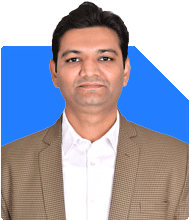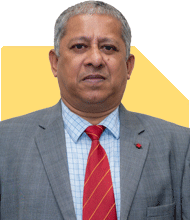My investment as of now 2 Girls SSY with 16 lakh and 9 lakh depositing very year 3 lakh combined for both daughters. NPS 1.5 lakh with 50 K per year . PF 44Lakh with 10 K additional deduction per month. Mutual fund 40 Lakh with 80 K per month. Shars 11.5 Lakh . NSC of 12 Lakh re investing every 5 years. want to retire at 46 right now age 40 per month salary in hand 1.65 lakh is 8 CR enough as I own my house. what should i do more to have 8 CR at the age of 46 means in another 6 to 7 years. daughters age 8 years and 4 years . Family of 4
Ans: You have diligently built a robust portfolio and taken critical steps to secure your family’s future. Your investments across the Sukanya Samriddhi Yojana (SSY), NPS, Provident Fund, mutual funds, and stocks showcase a well-rounded approach to growth and stability.
Your goal is to accumulate Rs. 8 crore by age 46, which is 6-7 years away. Let’s examine your current allocations and recommend strategies to help you achieve your target with minimum risk while ensuring long-term growth for your family.
1. Review of Current Investments
Your investments reflect a thoughtful approach across different instruments. Here’s an overview of their potential impact:
Sukanya Samriddhi Yojana (SSY): With Rs. 16 lakh and Rs. 9 lakh invested for your daughters, contributing Rs. 3 lakh annually is ideal for long-term growth. The SSY interest rate is attractive, offering good returns that can cover educational expenses.
National Pension System (NPS): A yearly investment of Rs. 50,000 in NPS provides moderate growth. However, note that NPS is primarily for retirement benefits, with partial liquidity before 60.
Provident Fund (PF): Your PF of Rs. 44 lakh and Rs. 10,000 monthly addition offers stability. PF rates are generally higher than most fixed-income products, making it a great retirement vehicle.
Mutual Funds: Investing Rs. 40 lakh in mutual funds with an Rs. 80,000 monthly SIP indicates a strong equity focus. This will support higher returns in the long term, aiding in reaching your corpus goal.
Stocks: A portfolio of Rs. 11.5 lakh in direct stocks adds diversification. Continue monitoring these holdings for optimal growth.
National Savings Certificate (NSC): Your Rs. 12 lakh in NSC, reinvested every five years, offers secure returns, though generally lower than equity. NSC is a good component for capital preservation.
2. Retirement Corpus Analysis
To achieve Rs. 8 crore in 6-7 years, let’s consider a balanced growth-focused approach. Your current portfolio value and ongoing contributions provide a solid base. Given a mix of equity, fixed income, and SSY, your potential to reach Rs. 8 crore looks realistic, provided market returns align favorably over time.
Suggested Strategy Adjustments:
Increase SIPs marginally for mutual funds over the next few years. A 10-15% SIP increment can significantly compound your wealth by your target age.
Evaluate your stock portfolio periodically. Aim for quality growth-oriented stocks and avoid high-risk or speculative investments to preserve capital.
3. Enhancing Your Portfolio Strategy
A clear roadmap to enhance growth while managing risk is essential. Here’s a refined strategy for your goal of Rs. 8 crore:
Mutual Funds: Continue prioritizing actively managed funds over index funds. Actively managed funds allow better control over market volatility and have the potential to outperform. Consider increasing your SIP in diversified funds and explore funds that focus on mid- and large-cap equities for stable returns. Avoid direct funds; regular funds through an MFD with a Certified Financial Planner (CFP) provide valuable guidance, optimizing returns with tailored investment insights.
National Savings Certificate (NSC): Consider NSC as a fixed-income backup. Given its low return rate, prioritize reinvestment only if its returns remain competitive against alternative fixed-income options.
National Pension System (NPS): NPS will add value post-retirement, but it lacks liquidity before retirement age. While your annual Rs. 50,000 investment benefits from tax deductions, avoid further increasing it as it will not contribute to your 6-7 year goal.
4. Tax Efficiency and Portfolio Rebalancing
With long-term capital gains (LTCG) on equity mutual funds and short-term gains taxed at 20%, consider:
Setting a long-term strategy to avoid frequent transactions. This will minimize LTCG tax, enhancing net returns. Only redeem equities if essential.
For debt funds, consider short-term fixed-income instruments as they align better with your income tax bracket.
5. Education and Marriage Fund for Your Daughters
Planning for your daughters' future is crucial. SSY is a good foundation, but enhancing it with additional investments will strengthen this corpus:
Balanced Funds: Consider adding balanced mutual funds for your daughters’ future needs. They offer moderate growth with lower risk, making them ideal for long-term goals.
SIPs with Step-Ups: A 10% yearly step-up in your SIPs allocated for their education and marriage could accumulate a strong corpus by the time they reach college-going age.
6. Emergency Fund and Insurance Coverage
Your focus on wealth accumulation should not overlook risk management. Here are essential adjustments:
Increase Emergency Fund: Ensure that your emergency fund covers at least 12 months of expenses. Allocate Rs. 8-10 lakh across liquid instruments like short-term debt funds for instant access during unforeseen events.
Insurance Adequacy: Ensure you have sufficient term insurance to cover your family’s financial security. Verify that your life insurance covers liabilities and future education and lifestyle expenses for your children.
7. Structured Approach Towards Asset Allocation
Balancing your portfolio to align with a moderate risk tolerance for the next 6-7 years will reduce potential losses while achieving growth.
Fixed Income: Gradually increase your PF and other debt allocations, as these provide stability and guaranteed returns. This ensures a steady income during volatile market phases.
Equity Allocation: Keep equities dominant in your allocation, as they are the main growth driver. Equity mutual funds, specifically, will play a significant role in achieving your Rs. 8 crore target.
Regular Portfolio Review: Annually review and adjust your portfolio. A CFP can guide you on specific fund performances and market conditions, ensuring your portfolio stays on track.
8. Aligning Goals with Family Security
Since you aim to retire early, ensuring the financial security of your family is essential. Here’s how to safeguard your family’s future:
Establish a Family Trust: Consider setting up a family trust if you aim to secure and pass on assets seamlessly. It can reduce inheritance issues and provide tax-efficient transfers for your children’s benefit.
Child-Specific Funds: Allocate a separate, conservative fund for each child’s major expenses (e.g., marriage or higher education). Consider child plans with a mix of equity and debt, specifically designed to build wealth for such milestones.
9. Final Insights
Your financial journey so far has been effective and well-structured. Minor adjustments, increased SIPs, and a focus on asset allocation will strengthen your goal of achieving Rs. 8 crore by age 46. Regularly consult a Certified Financial Planner (CFP) to stay on track with evolving market trends and optimize your wealth.
Implementing these strategies will not only help you achieve your retirement corpus but also ensure a secure and comfortable future for your family.
Best Regards,
K. Ramalingam, MBA, CFP,
Chief Financial Planner,
www.holisticinvestment.in
https://www.youtube.com/@HolisticInvestment

























